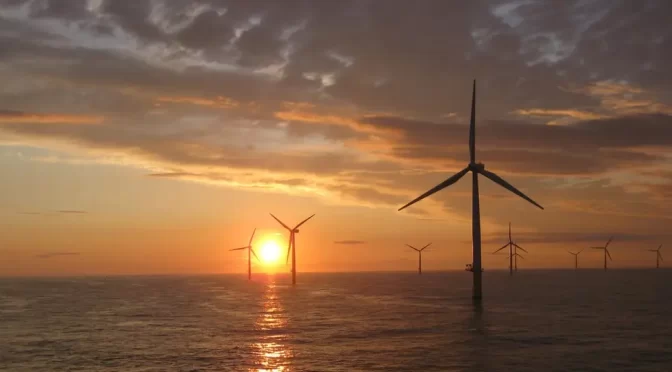Offshore floating wind farms have emerged as a viable solution to the land constraints faced by traditional wind energy projects. As the global demand for clean and renewable energy sources continues to grow, the need for innovative and efficient ways to harness wind power has become increasingly apparent. Offshore floating wind farms offer a promising alternative to land-based wind turbines, overcoming the limitations of space and environmental impact while maximizing the potential for wind energy generation.
The concept of offshore floating wind farms is not entirely new, with the first full-scale floating wind turbine being installed off the coast of Norway in 2009. Since then, the technology has advanced significantly, with several countries, including the United States, Japan, and the United Kingdom, investing in research and development of floating wind farms. These efforts have led to the deployment of numerous pilot projects, which have demonstrated the feasibility and effectiveness of this innovative approach to wind energy generation.
One of the primary advantages of offshore floating wind farms is their ability to be located in deeper waters, where wind speeds are typically higher and more consistent than those found near the shore. This allows for greater energy generation potential, as the turbines can harness more wind power, resulting in increased efficiency and overall output. Additionally, the farther offshore the wind farm is located, the less likely it is to face opposition from local communities due to concerns about noise, visual impact, and potential harm to wildlife.
Another significant benefit of offshore floating wind farms is their reduced environmental footprint compared to land-based wind turbines. Traditional wind farms require large areas of land to be cleared and leveled, which can result in significant habitat loss and ecosystem disruption. In contrast, floating wind farms have a minimal impact on the seafloor, as they are anchored using mooring lines and do not require extensive construction or excavation. This not only helps to preserve marine habitats but also reduces the overall environmental impact of the project.
The scalability of offshore floating wind farms is another factor that makes them an attractive option for meeting the growing demand for renewable energy. Unlike land-based wind farms, which are often limited by available land and local regulations, floating wind farms can be expanded relatively easily by adding more turbines to the existing infrastructure. This flexibility allows for the potential to generate significant amounts of clean energy without the need for extensive land acquisition or regulatory hurdles.
Despite the numerous advantages of offshore floating wind farms, there are also challenges that must be addressed in order to fully realize their potential. One of the primary concerns is the cost of installation and maintenance, as the offshore environment can be harsh and unpredictable, leading to increased wear and tear on the turbines and support structures. However, as the technology continues to advance and economies of scale are achieved, it is expected that these costs will decrease, making floating wind farms an increasingly competitive option for renewable energy generation.
Another challenge is the need for efficient and reliable transmission of the electricity generated by the offshore wind farm back to the mainland. This requires the development of advanced underwater cabling systems and grid connections, which can be both technically complex and expensive. However, ongoing research and development in this area are expected to yield improvements in efficiency and cost-effectiveness, further enhancing the viability of offshore floating wind farms as a renewable energy solution.
In conclusion, offshore floating wind farms represent a promising and innovative approach to overcoming the land constraints faced by traditional wind energy projects. By harnessing the power of offshore winds in deeper waters, these floating wind farms have the potential to generate significant amounts of clean, renewable energy while minimizing environmental impact and maximizing scalability. As technology continues to advance and costs decrease, offshore floating wind farms are poised to play an increasingly important role in meeting the global demand for sustainable energy sources.


